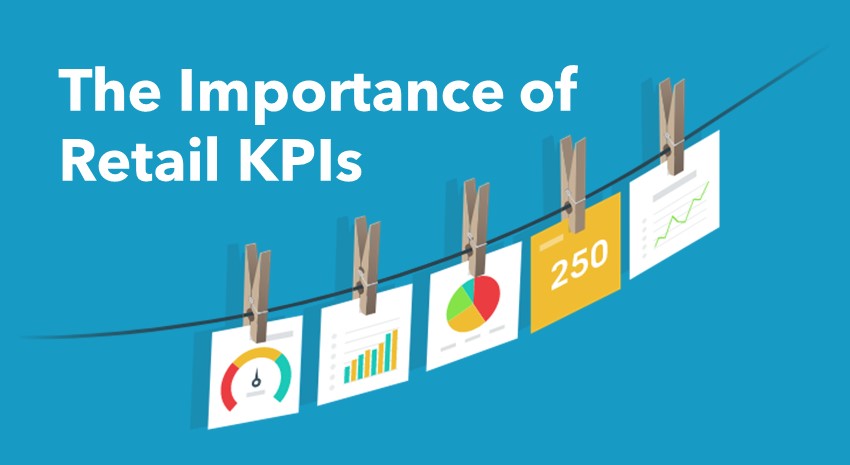Retail KPIs: Why They’re Important and How to Decide What You Should Be Measuring

As we reach the end of a very unpredictable summer and pass the half-way point in the year, a great way to help finish 2021 strong along with adapting to new trends is to dive into measurables—the key performance indicators (KPI) that make sure your business is still on the path to your goals for the year, as well as preparing you for the months beyond. While there is no one right list of KPIs because each retailer should be measuring different things based on a number of factors, there are some general guidelines that will help you get started.
Which KPIs Should Measure? It Depends on Where You Are and Where You Want to Be
The first step is to lay the groundwork by reviewing some of the factors that impact which KPIs we choose to analyze. Review where your business is right now. This will impact which KPIs you should be focusing on. Perhaps you’re a startup and decide to focus on sales, profit margins, and returns. However, as you start growing, those KPIs will change, perhaps to analyzing sell-through rate, average spend, product returns, or other metrics.
Start by thinking of where your business is, but also consider your goals for this quarter, this year, next year, the next three years, and so on. Align your KPIs with your goals to help focus your intention. So, ask yourself questions like these:
- Are you a startup looking to make your first six figure revenue?
- Are you looking to reduce overhead?
- Do you want to decrease the cost of customer acquisition?
Think of KPIs as steps to help you achieve your business goals.
Watch the Tribe Talk: The Top KPIs for Retailers to Measure
Understand the Data You Need to Analyze and How to Structure It
As mentioned in the beginning of this blog post, there is no standard for setting up and measuring retail KPIs. Each business needs to understand what data they need to analyze. Create metric groups and change those metrics based on how your business is progressing. This is the only real standard or best practice with KPIs: Use multiple metrics to analyze your data because, although you might be reporting on one KPI, the data for the KPI comes from and impacts multiple areas of your business. Keep in mind that related data or other metrics will help expose patterns or anomalies that should be investigated.
Don’t Try to Do It All at Once: Prioritize Which Retail KPIs to Measure
Also, there are many ways to structure data for these reports. And since we recommend all businesses review KPIs regularly, there are many metrics to keep track of and some metrics can be analyzed in several areas. Therefore, you should start by selecting a few KPIs to measure and then rotate them based on your goals or certain time periods—monthly, quarterly, or annually, for example. However, you should also take into consideration that the retail landscape changes periodically—so you should have KPIs that reflect those changes, even if you only measure them once a year.
Maybe you need to measure the effectiveness of an ad campaign or a product mix, for example, By asking simple questions, you can also build vital metrics that could be incorporated into your standard KPI review. However, you can also have KPIs that are performed periodically, to compare year-over-year performance, for example. Regardless, when you define specific goals and review the KPIs regularly, you can see if actions are needed and dive right into the data to examine specific occurrences.
Defining and Reviewing Retail KPIs Can Be Simple…With the Right Technology.
Now that we’ve discussed how and why you should formulate and measure KPIs, the next question is, which tool should you use?
There are many options, but, like determining which KPIs to measure and when, you need to start by asking some simple questions, like:
- What channels do you sell on?
- How do you display real-time inventory from each channel?
- Do you know if you are over- or under-staffing?
Questions like these will help determine which tool to use. For example, your profit margin could vary greatly depending on the channel, but you can then compare these channels and other metrics like basket performance versus average sale to see which channel is outperforming the others. You could measure specific areas within each channel, like shopping cart abandonment, which wouldn’t be something you would measure in a physical store. Google and Amazon provide services to help measure these types of KPIs. Modern ERP and POS software like Microsoft Dynamics 365 Business Central and LS Retail also offer those features. However, one of the easiest ways to centralize all this data and visualize it is with the powerful reporting offered by Microsoft Power BI.
The key for whichever tool you choose for measuring your retail KPIs is that it should be integrated with your core business systems and easy to use. For example, Power BI can measure data from your in-store inventory, social media sources, and other third-party systems. Power BI is also very easy to use; nearly anyone can prepare structured or unstructured data to find insights. It also works easily with Excel, allowing anyone to quickly gather, analyze, publish, and share data.
Let ArcherPoint Help You Put Retail KPIs to Work
There is much more to KPIs, but this should give you a good start, assuring you that KPIs are worth the effort and that there are tools to help. To learn more, watch this ArcherPoint Tribe Talk video, The Top KPIs for Retailers to Measure. Then talk to the retail experts at ArcherPoint about how we can help with technology to measure your KPIs.
